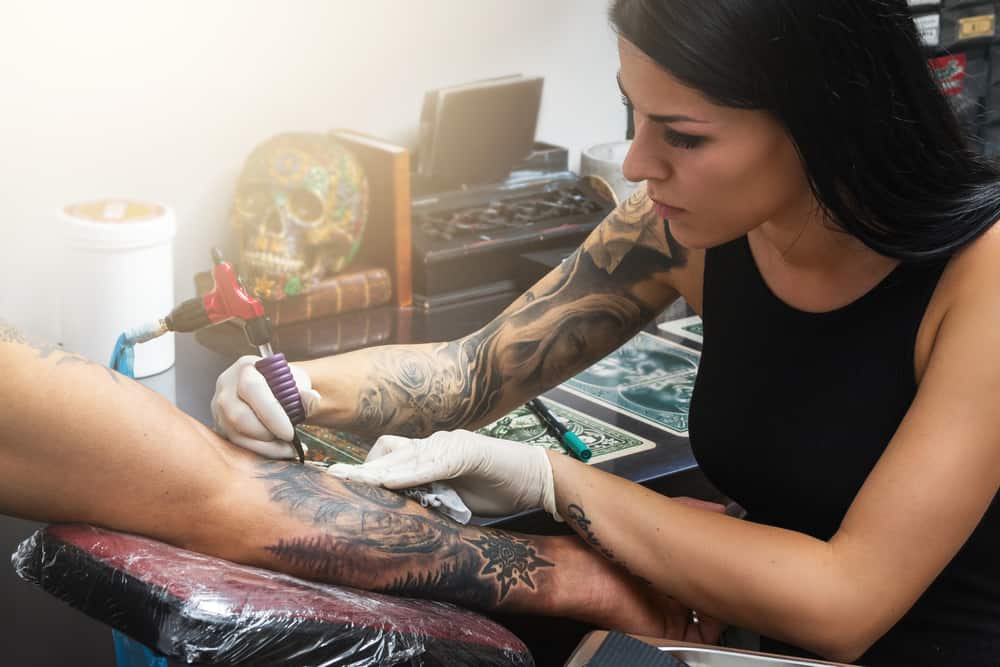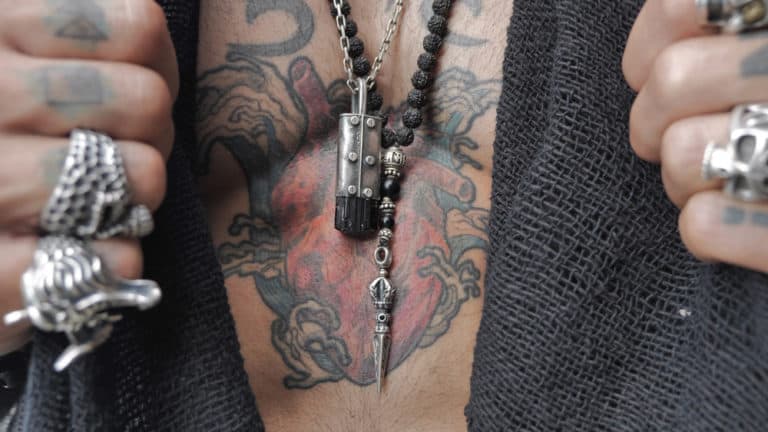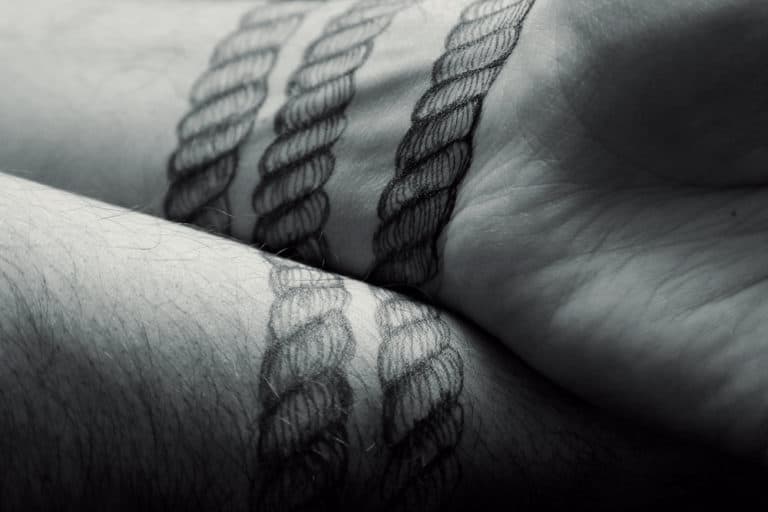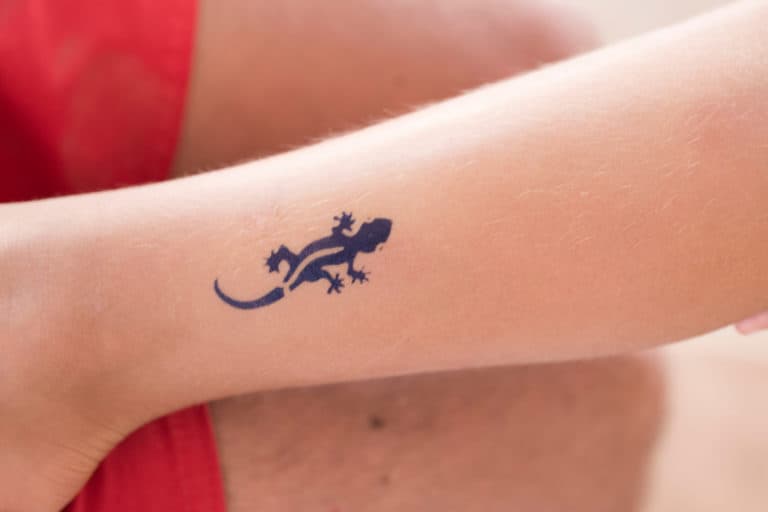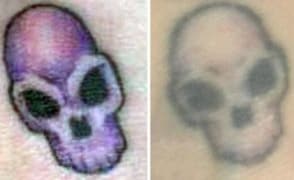Can A Tattoo Artist Numb You? (Yes, But There Is A Catch)
Tattoos are painful. How much a tattoo hurts depends on the location, size of the piece, the artist, and, of course, the client’s pain tolerance. But with plenty of numbing creams on the market, many question why artists don’t use them more often. Is it just because pain is part of tattoo culture, or is there more to it than that?
Clients who want to use tattoo numbing creams must obtain the cream themselves and apply it about an hour before the session. The artist must be informed as the cream can leave a film that can cause the needle to slip, make applying the stencil challenging, and make the skin mushy.
Numbing creams have their positive points in the tattoo industry, but there are some negatives. Also, not all products are equal, so even artists that are happy to tattoo numbed clients will have a strict list of creams that clients are welcome to use. Lastly, there are some potential pitfalls for the client to consider for their own health.
Can You Use A Numbing Cream For A Tattoo?
You can use a numbing cream before a tattoo. But to avoid a nasty experience, make sure you do the following:
- Ask your tattoo artists if they tattoo clients that use numbing cream
- Tell your tattoo artist in advance you will be using a numbing cream
- Ask your tattoo artist for recommendations
- Do further research on the products
- Buy a quality product
- Consider discussing it with a doctor or pharmacist
- Read the instructions carefully
- Do a small skin test before the day of the tattoo appointment
- Remember to do it before the appointment, as directed
- Remember to wear gloves
- Do not just show up to an appointment having secretly used numbing cream
What Are The Advantages Of Numbing Creams?
There are many advantages to using numbing creams, including widening the market of people who will get inked. However, not everyone sees it that way. There is a minority who believe that if you can’t take the pain, you shouldn’t be able to have a tattoo.
Numbing creams can:
- Speed up the process, reducing breaks
- Make the process more positive for those that struggle with handling pain
- Widen the tattooing market
- Allow sensitive clients to tattoo areas they would not have considered before
Will Numbing Creams Create A Faded Tattoo?
Numbing creams will not impact the quality of the ink or how it reacts to a person’s skin. Instead, the issues have to do with the artist’s ability to work with the skin. Thus, numbing creams have nothing to do with faded artwork.
However, some people believe numbing creams can make the healing process longer. Again, this won’t impact the color of a tattoo unless the client scratches or picks at the healing artwork.
Why Tattoo Artists Don’t Provide Numbing Creams
Most tattoo artists won’t provide the numbing creams themselves but only offer their opinions on products. This is both for legal reasons and costs. Artists are not pharmacists are doctors. Improper application of the product could be a potential legal issue and could impact insurance, all of which would make getting a tattoo more costly.
Lastly, you need to be doing a skin test before the tattoo appointment and apply the cream a good 45min before the actual tatting begins. Thus, it remains best for the client to be solely in charge of this responsibility.
Why Tattoo Artists Will Not Work With Some Numbing Creams
Even tattoo artists that are happy to work with clients that use numbing creams will often have strong opinions about which products their clients use. Yes, it is your body. Yes, the type of numbing cream is a discussion you should also have with a pharmacist or a doctor. But the artist is considering aspects of these creams medical professionals overlook.
Tattoo artists not only are thinking about you and your comfort, but the artwork they are inking into your skin. For the best artwork, the needle can’t be slipping around. Also, some people’s skin texture changes in reaction to these creams creating a rubbery or mushy feel, potentially impacting how well a line is inked.
When tattoo artists recommend numbing products, they are not just considering which ones last through a session. They also want to ensure they can get the residue off their client’s skin so the finished piece will look good. They are also trying to avoid products that have a tendency to change skin texture, be it mushiness, swelling, or making clients itch and twitch.
Why Don’t Some Tattoo Artists Let Clients Use Numbing Creams?
Some tattoo artists refuse to work with clients who want to use a numbing cream. Sure, you could do it anyway, but the artist will likely know due to the residue on your skin. It’s really a bad idea to upset the artist about to put needles in your skin.
While it is true some tattoo artists believe in the “pain culture” and “earning” your tattoo, that isn’t the only reason tattoo artists might refuse to work with them. Some have had bad experiences, including clients freaking out when the numbing agent didn’t work well or wore off early.
Usually, when you get a tattoo, your body gradually builds endorphins as it progresses. But if the numbing agent wears off partway through, it can be a bit of a shock.
Some numbing agents also have a tendency to cause increased bleeding, which makes it harder to provide the client with an excellent piece of art.
Also, while there are some excellent quality numbing creams out there if the artist has had bad experiences with needle slippage and changes to skin texture, it makes them reluctant to try again.
Lastly, there is a fear that the numbing cream might interfere with the ink. Most tattoo artists that allow clients to use numbing creams say this isn’t true for the right brands. Thus, it is always wise to take into consideration your artist’s cream preferences in addition to the advice of medical professionals.
Tattoo Numbing Creams And How They Work
There are many numbing creams on the market. These are topical creams that will disrupt or block the signals nerves send out to alert your brain that you are in pain. Generally, the person applies the creams using gloves at a specific thickness across the area they wish to be numbed. Then they wrap it for approximately 45-60 and then wash it off as directed.
While all numbing creams have their own formula and concentrations, they will have at least one, if not all, of the following active ingredients.
What Is Benzocaine?
Benzocaine is a numbing agent that disrupts nerve signals, thus blocking pain. The chemical compound is derived from ethanol and para-aminobenzoic. It is commonly used for insect bites and reactions to poison ivy. However, in 2018 the FDA put out a safety bulletin against using it in children under 2 for teething.
Common side effects can include:
- Burning
- Flaking
- Itching
- Redness
- Stinging
- Tenderness
However, there are some less common but serious side effects, including dizziness, headaches, swelling, and rapid heart rate.
What Is Lidocaine?
Lidocaine is another local anesthetic that blocks nerves from sending signals. The monocarboxylic acid amide is commonly prescribed to relieve pain from shingles.
Common side effects include:
- Constipation
- Dizziness
- Drowsiness
- Edema (swelling)
- Headaches
- Low Blood Pressure
- Numbness
- Redness
- Skin irritation
- Tiny red or purple spots
- Tingling
- Vomiting
Serious side effects, including allergic reactions, are rare but do exist.
What Is Tetracaine?
Tetracaine is a type of amino-ester anesthetic commonly used for procedures to the eye’s surface. It is also used for other areas of the face, such as the nose, throat, and around the mouth. It helps block nerve endings, where pain signals are sent.
Common side effects of Tetracaine topical (not the eye drops) include:
- Burning
- Itching
- Redness
- Stinging
- Tenderness
Serious side effects, such as dizziness, are rare but do exist.
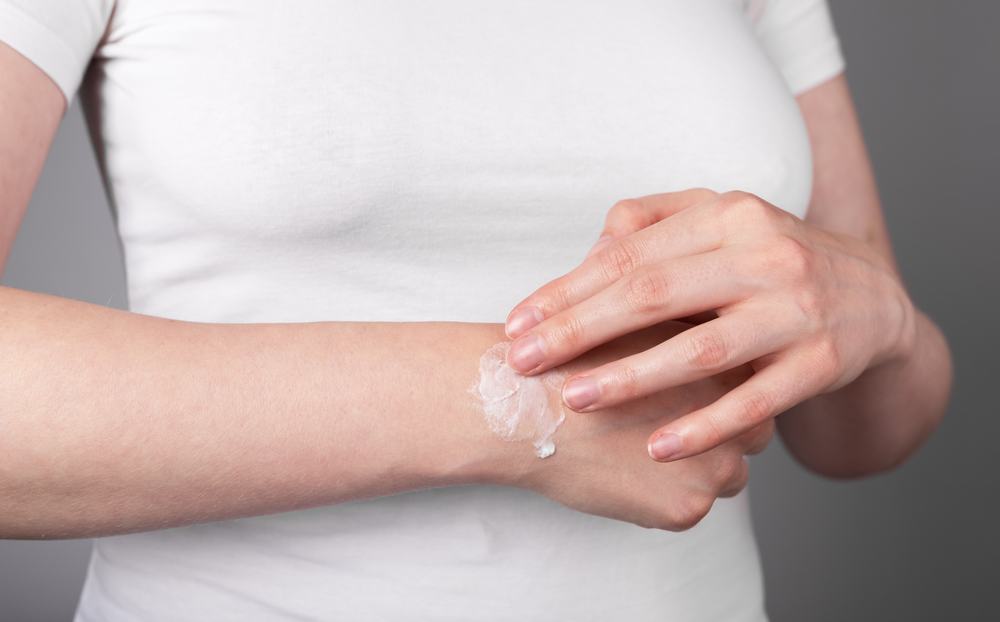
Numbing Sprays Pros & Cons For Tattoos
Some people prefer to use a numbing spray for smaller tattoos rather than a cream. They are not considered as effective, especially for larger areas. Most that feel they work described as taking the edge off, rather than completely ridding you of the pain. However, there are some people who think the sprays are just as good as the cream.
As always, a skin test is recommended so you can judge if your skin will react in adverse ways, such as becoming red and swollen.
Pros numbing creams include:
- Don’t require gloves or wrapping
- Easy to apply
- Hygienic, as nobody touches the actual product
- Instant relief
Cons to numbing sprays include:
- Less effective (some tattoo artists think they’re worthless)
- Isn’t easy to assess how much has been applied to the skin
Tattoo Inks With Anesthetics
With the rise of the permeant makeup market, there has become a growing concern over tattoo inks with anesthetics in them. While tattoo ink is not the same as the ink used in cosmetic procedures, the practice has crossed over.
This has caused alarm in health circles as high levels of ingredients such as Tetracaine can be toxic. As a result, these inks are not considered safe, and it is recommended that they are not used. The health risks were addressed in a full scientific report released in June 2019.
8 Ways To Minimize Tattoo Pain Without Numbing Creams
There are ways to reduce the pain and discomfort of tattoos that don’t involve numbing creams. These will not block pain but at least make the experience more tolerable. Frankly, we think you should consider most of these suggestions, even if you are using a numbing cream.
Have A Decent Meal
Don’t get a tattoo on an empty stomach. Low blood sugar levels lower your pain tolerance. You can even bring snacks, like pretzels and rice crackers, to eat during the process. This is especially a wise idea if your appointment will go over an hour.
Hydration Is Your Friend
Don’t go to a tattoo appointment with dehydrated skin. You are putting artwork on your body, make the canvas look its best (but no lotion). Also, the better shape your skin is in, hydration-wise, the easier it takes the ink, limiting how much an artist has to go over a spot. Thus, a faster tattoo. Besides, dehydration can make the pain worse.
Don’t Drink And Get Inked
Do not go to a tattoo appointment with alcohol in your system. It isn’t just because alcohol can lead to poor decisions. It actually increases your pain and, worse for your tattoo, makes you bleed more. This can impact the ink taking, leaving you less than thrilled with the finished results.
Good Sleep, Less Pain
We are more sensitive to pain when we are tired. Plus, a tired body might struggle to produce the endorphins and adrenaline you need to take the edge off the pain. So best to have an early night before your tattoo is scheduled.
Avoid Unnecessary Breaks
Some breaks can be useful. It gives you time to have a snack and allows you to address nature’s call. But if you take too many breaks, the swelling can worsen before the artist is done, making it harder to ensure you are receiving high-quality art. You can also lose the adrenaline build-up, which is helping you get through the session with less pain.
Breathe
Holding your breath or breathing shallow makes the pain worse and isn’t good for you. Women and labor and weight lifters are all told to breathe, and so should you while getting inked.
Avoid Stress And Embrace The Zone
Stress is going to make the whole process difficult. You don’t want extra muscle tension adding to your discomfort. So bring that music or noise-canceling headphones that you need to stay calm and slow down.
Choose A Less Sensitive Body Part
If you are getting a tattoo for the first time, it is best to pick an area of the body that isn’t as sensitive as other areas.
Recommended places include:
- Bicep
- Calf
- Gluteus
- Lower back
- Outer Thigh
Sensitive places to get a tattoo include:
- Ankle
- Armpit
- Elbow
- Groin
- Hips
- Inner bicep
- Ribs
- Shin
Conclusion
Getting numbed for a tattoo is a decision between you and your tattoo artist. If your tattoo artist won’t do it, shop around for an artist that will work with you. But listen to advice, follow directions, be aware of the risks, and always do a skin test before appointment day.
References
- https://www.webmd.com/drugs/2/drug-8532-9170/lidocaine-topical/lidocaine-topical/details
- https://www.webmd.com/pain-management/topical-pain-relievers
- https://pubmed.ncbi.nlm.nih.gov/22970216/
- https://analyticalscience.wiley.com/do/10.1002/sepspec.1695d5ab0d7/full/
- https://www.researchgate.net/publication/304910787_Comparison_of_lidocainetetracaine_cream_and_lidocaineprilocaine_cream_for_local_anaesthesia_during_laser_treatment_of_acne_keloidalis_nuchae_and_tattoo_removal_Results_of_two_randomized_controlled_tri
- https://www.inkedmag.com/culture/8-tips-make-tattoos-hurt-less#gid=ci0234ff89e0052695&pid=tattoomeme
- https://www.verywellhealth.com/skin-numbing-cream-5116837

